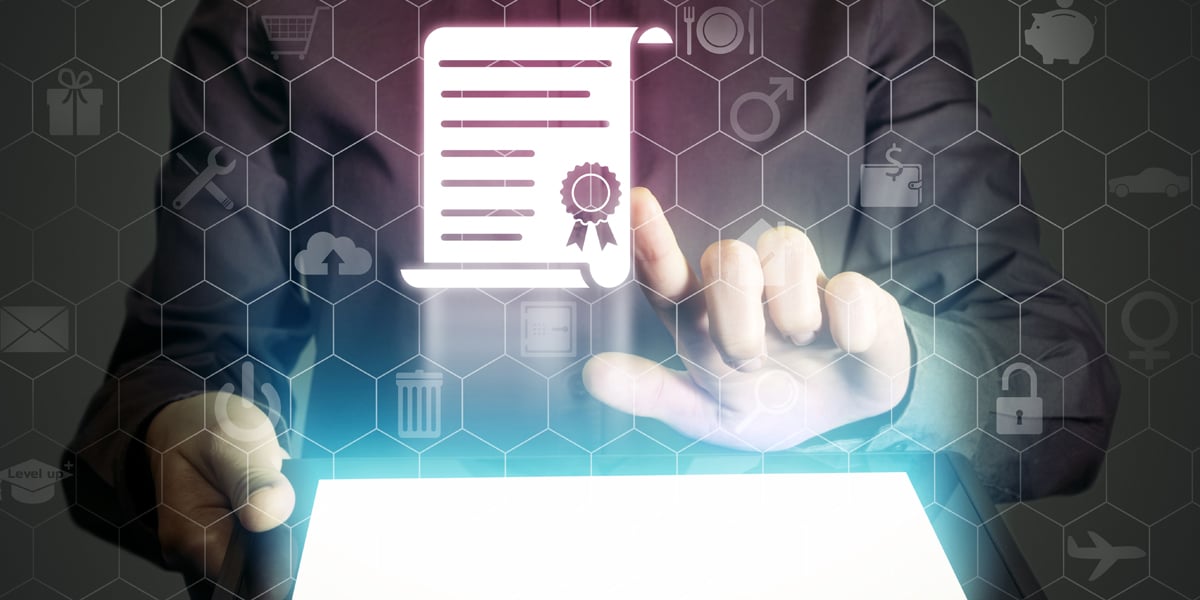How Does Blockchain Improve Education?
Blockchain is a rapidly growing technology, in part because it’s always on the move and seeking out ways to improve. The field of education is, in many ways, similar in that it’s also looking for the next innovation. This goes beyond smartboards, eLearning, and learning management platforms. There are also matters of student information and records. With blockchain technology’s increasing utility in many industries and sectors, it is only natural that school administrators may be wondering how a blockchain decentralized ledger can benefit education specifically. Let’s look at five simple ways education stands to benefit from blockchain technology.
1. Student Records and Grades
Preparing and distributing academic transcripts is a time-consuming and labor-intensive process because every grade must be manually entered and verified to ensure accuracy before issuing a certified transcript. Blockchain solution allows for a more streamlined procedure and prevents fraudulent claims on unearned educational credits. Grades can also be secured from potential hackers. Blockchain allows for comprehensive records to be stored in systems that are both permanent and portable.
 Issuing and storing diplomas on blockchain makes them easily accessible, and helps to avoid fraud.
Issuing and storing diplomas on blockchain makes them easily accessible, and helps to avoid fraud.
2. Diplomas and Certifications
Diplomas, credentials, and other certifications can also be issued and stored on a blockchain system. This solution would mean that employers would only need to be provided with a link to a digital diploma. This is the exact solution MIT turned to in 2017 when they started issuing blockchain-stored diplomas to its graduates. This prevents people from falsely positioning themselves as graduates of a university they never attended. If a person holds another certification such as fluency in a language, blockchain also allows for more secure storage of the credential.
3. File Storage
If you’re involved at an institution which desires to store curricula, records, or other pieces of information, you probably already know that this process can require an awful lot of storage space–particularly at a larger school. You may be thinking a hard drive may be the solution, but if it the hard drive is damaged or hacked, then this can cause a major problem. What about the cloud? Unfortunately, cloud storage is expensive, which puts that solution out of reach for many. This is where blockchain can help.
4. Building Security
In an effort to keep students safe at school, academic institutions have been adding more security cameras and sensors. All these security measures are often connected via a local network. This sounds great, but how can you ensure that your security systems don’t become compromised by a cyberattack or hack? Some blockchain systems share data between each other without losing the needed cybersecurity which helps keep people and their data safe.
5. Lessons and Curriculum
SIMBA Chain blockchain solutions are also compatible with smart contracts, which allow for something like the second part of a lesson to be “locked” behind the first one until the first half is completed. This is just one possible example. A teacher could set up many tasks for students and the blockchain can automatically verify when the student completes the task through these smart contracts. Whether the tasks be attendance or assignment-related, smart contracts allow immediate results without compromising accuracy.
These are just five of the many possible ways blockchain technology can improve the way schools operate. Blockchain’s application in the world of education is still relatively new, but what we do know is that the possibilities are limitless. As school administrators continue to seek improvements, blockchain technology is a powerful asset that can help them transform what was once thought impossible and make it a reality.